ROOM: The Space Journal is one of the top magazines on space exploration, technology and industry. At ROOM, we share a common goal – advancement of peaceful space exploration for the benefit of humankind, all while bringing you incisive articles on an array of contemporary topics. Our authors include researchers and industry leaders from all over the world, which lets us bring you the most up-to-date and comprehensive information about nasa finds exoplanet.
 April 2019
Scanning the skies for exoplanets
April 2019
Scanning the skies for exoplanets
...where Kepler left off, NASA’s Transiting Exoplanet Survey Satellite (TESS) has begun to scan the skies with high hopes of matching, if not surpassing its predecessor by finding a treasure trove of exoplanets and perhaps landing the ... their host stars in 13 days or less; these are considered short orbital period exoplanets. Conversely, Kepler was adept at finding exoplanets with orbital periods from 10 days up to a few hundred days, a feature...
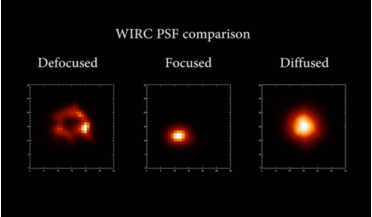 09 October 2017
New telescope attachment helps find exoplanets
09 October 2017
New telescope attachment helps find exoplanets
...a recently published paper that describes the diffusers. "This technology is especially relevant considering the impending launch of NASA's Transiting Exoplanet Survey Satellite (TESS) early in 2018. It is up to ground-based facilities to rapidly and reliably ...worlds transit their stars, which will help us measure their masses and compositions, and even find new planets in their systems; and we can use them to study the temperature structures ...
 January 2023
Private space stations and NASA’s effort to re-invent itself
January 2023
Private space stations and NASA’s effort to re-invent itself
... lifetime ended up being more than twice its original design-life (32 years rather than 15). However, the NASA of the 2020s is clearly intent on reinventing itself. Today, it is no longer developing ‘technical specifications’ in-... it is producing ‘performance specifications’ from which private space companies develop competitive designs that NASA selects after a detailed review. This article explores the status of planning and implementation for...
 November 2018
How many people does it take to colonise an exoplanet?
November 2018
How many people does it take to colonise an exoplanet?
... Centauri b gives some cause for optimism. Orbiting the nearest star to the Sun, this is the closest exoplanet we can find. It is likely to be a rocky (telluric) planet as its mass is close to that of Earth. Most ...formation and evolution of black holes. He has been selected to lead observations of galaxies for a forthcoming NASA satellite called IXPE (Imaging X-ray Polarimetry Explorer, to be launched in 2021). The HERITAGE project created ...
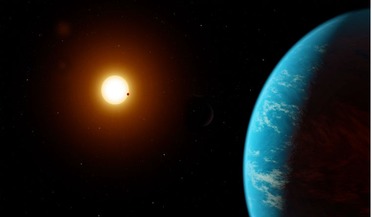 07 January 2019
Two new firsts for exoplanets found by TESS
07 January 2019
Two new firsts for exoplanets found by TESS
... host star will be difficult to achieve with TESS, as the state-of-the-art planet-hunter is most sensitive to finding exoplanets that orbit their host stars in less than 13 days. However, that’s not to say that it won... get called orange dwarfs. What is even more intriguing about the find is that HD 21749b is dense, really dense. This heavy world is one of only three exoplanets to have been found that are this dense. Weighing in at nearly...
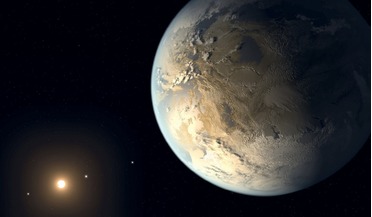 August 2018
Exoplanet census promises radical discoveries
August 2018
Exoplanet census promises radical discoveries
... of the source star, shown in the top panel. WFIRST Exoplanet Microlensing Survey In Figure 1 we compare the region of orbital sensitivity of NASA’s Kepler mission and WFIRST to the orbits of planets in our...Its Coronagraph instrument will directly image exoplanets and make detailed measurements of the chemical makeup of their atmospheres. Finding Earths with a starshade Studying the atmospheres of exoplanets will allow us to detect signs ...
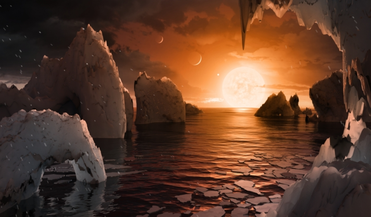 22 February 2017
NASA announces the discovery of first-ever exoplanet system with seven Earth-size planets
22 February 2017
NASA announces the discovery of first-ever exoplanet system with seven Earth-size planets
...of the system are sure to reveal more secrets.” NASA will use its James Webb Space Telescope, launching in 2018, for further research of the TRAPPIST-1 exoplanet system. Webb will enable the research team to detect...the agency’s Science Mission Directorate in Washington. “Answering the question ‘are we alone’ is a top science priority and finding so many planets like these for the first time in the habitable zone is a remarkable step forward toward...
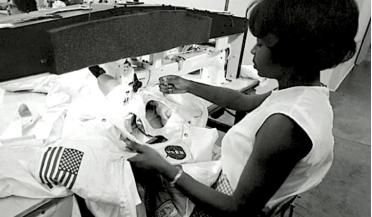 May 2024
Out of this world – NASA’s textile technicians and innovations for space voyages
May 2024
Out of this world – NASA’s textile technicians and innovations for space voyages
...is stronger than steel, lighter than aluminium and boasts the conductivity of copper. NASA’s textile outreach activities NASA’s textile scientists and engineers have always collaborated with artists, fashion designers, academic ... Science, and Flight Configuration. The area of Sewn Flight Articles was developed out of NASA’s need to find skilled sewing technicians. During the Shuttle programme it favoured sewn products because they were light...
 January 2017
Blueprint for NASA’s journey to Mars
January 2017
Blueprint for NASA’s journey to Mars
... However, the mission sequence is intended to be executed without any substantial increase in the current inflation-adjusted NASA human exploration budget, given a phased retirement of the ISS beginning in 2024. The key to a cost... Camp concept builds upon existing deep space technologies in development today and provides a blueprint for NASA’s Journey to Mars. This plan provides the opportunity for significant scientific discovery, can be evolved...